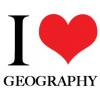- 2 replies
- 3,323 views
- Add Reply
- 14 replies
- 5,758 views
- Add Reply
- 12 replies
- 9,910 views
- Add Reply
- 4 replies
- 2,732 views
- Add Reply
- 0 replies
- 1,286 views
- Add Reply
Landsat 7 ETM+ L1T imagery preprocessing steps
By aionyeah,
Hello, pls another question I have has to do with Landsat 7 ETM imagery L1T. Before I can use it for change detection, what are the preprocessing steps required? or can I omit preprocessing since its been radiometrically and geometrically corrected according to the L1T specifications?
Thank you in advance
How to perform NDVI on multi temporal landsat etm images
By aionyeah,
Hello pls you tell me the steps required to conduct NDVI on landsat imageries from 2000 to 2009. I am using Erdas and am new to everything. thank you
just following up to the above. i want to map mosquito breeding habitats using an ndvi stratification. from literature ndvi values of 0.54 and above re associated with potential mosquito habitats. i want to see how these habitats change over the years for the period 2000 to 2009. i have chosen to use landsat instead of modis cos of the spatial re
How to Smooth a TIN surface?
By maunaloa,
Hoya!
Guys, i have some point-z datas, and i made TINs from them. The results are very ugly, if there was only a small amount of points, the TIN is rigid, angular. I want to smooth a bit, like in the modeller programs, or like in the ArcMap at the Advanced Editing toolbar (smooth feature). Any idea?
How to make my map services available on the web (ArcGIS Server 10)
By corverse,
I successfully installed ArcGIS Server 10 .NET on Windows XP SP3..i configured everything that needs to configure. I created a map service which web access is enabled. When i try to use the service in ArcGIS Explorer Online, it says map service is unreachable and i also i found out that the map service is accessible in local intranet only. When i checked the url of the service is "http://gis-wk1/arcgis/rest/services/settlement/MapServer", this is the only url i've got..The esri help stated that
MOVED: Use of Satellite and In-Situ Data to Improve Sustainability

By Lurker,
This topic has been moved to Ebook and Journal.
[iurl]http://gisarea.com/index.php?topic=1566.0[/iurl]
-
Forum Statistics
8.8k
Total Topics43.5k
Total Posts



